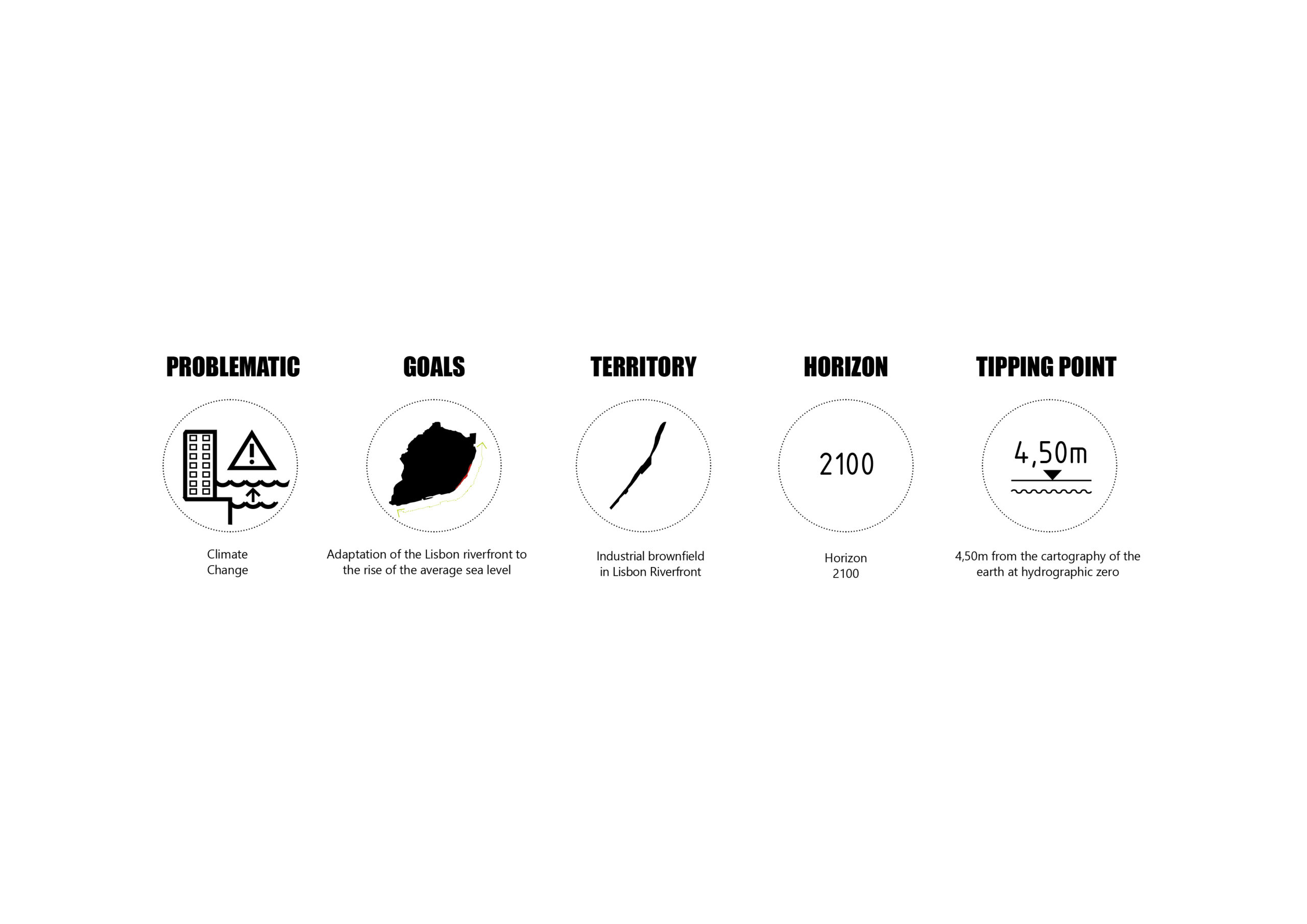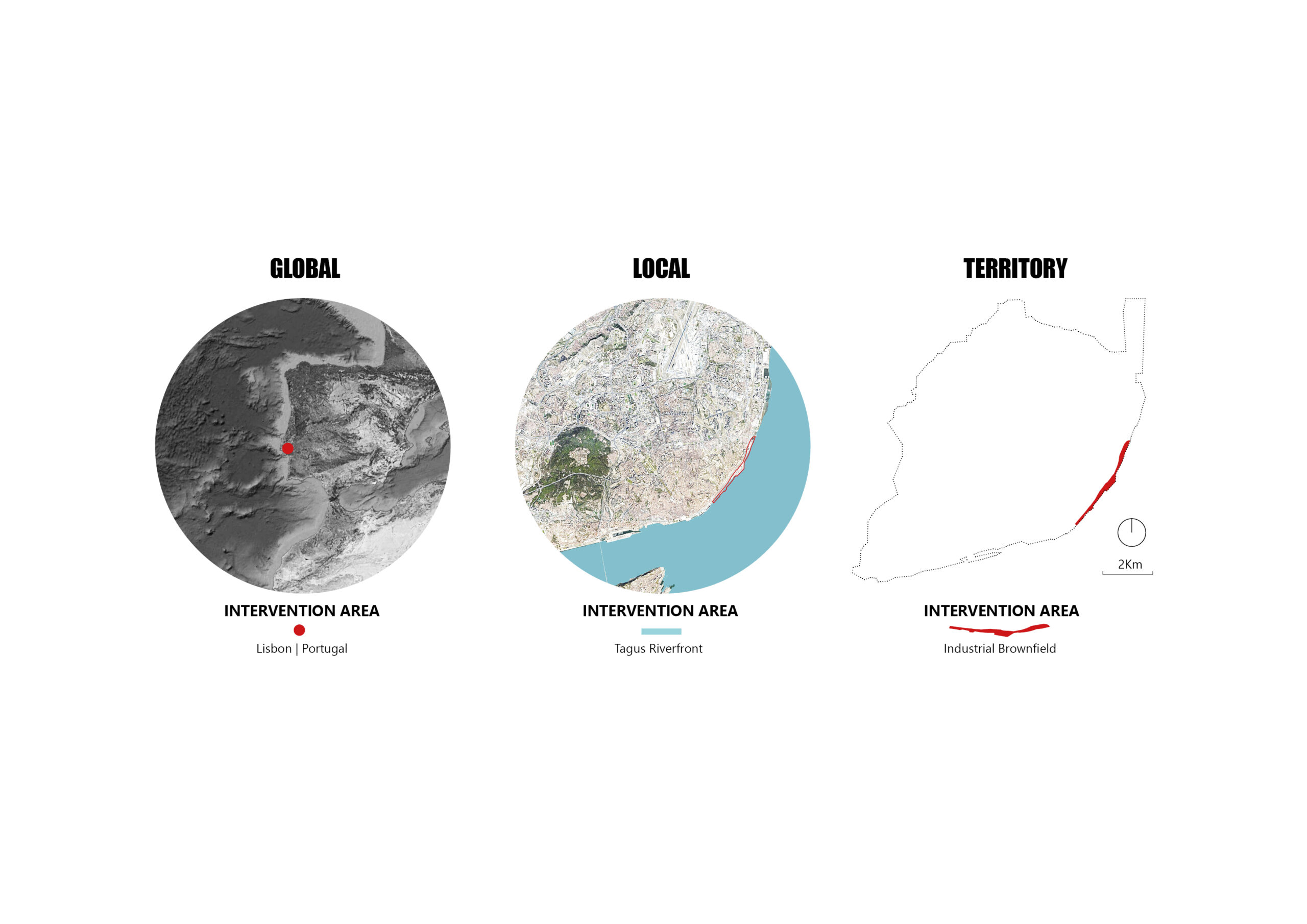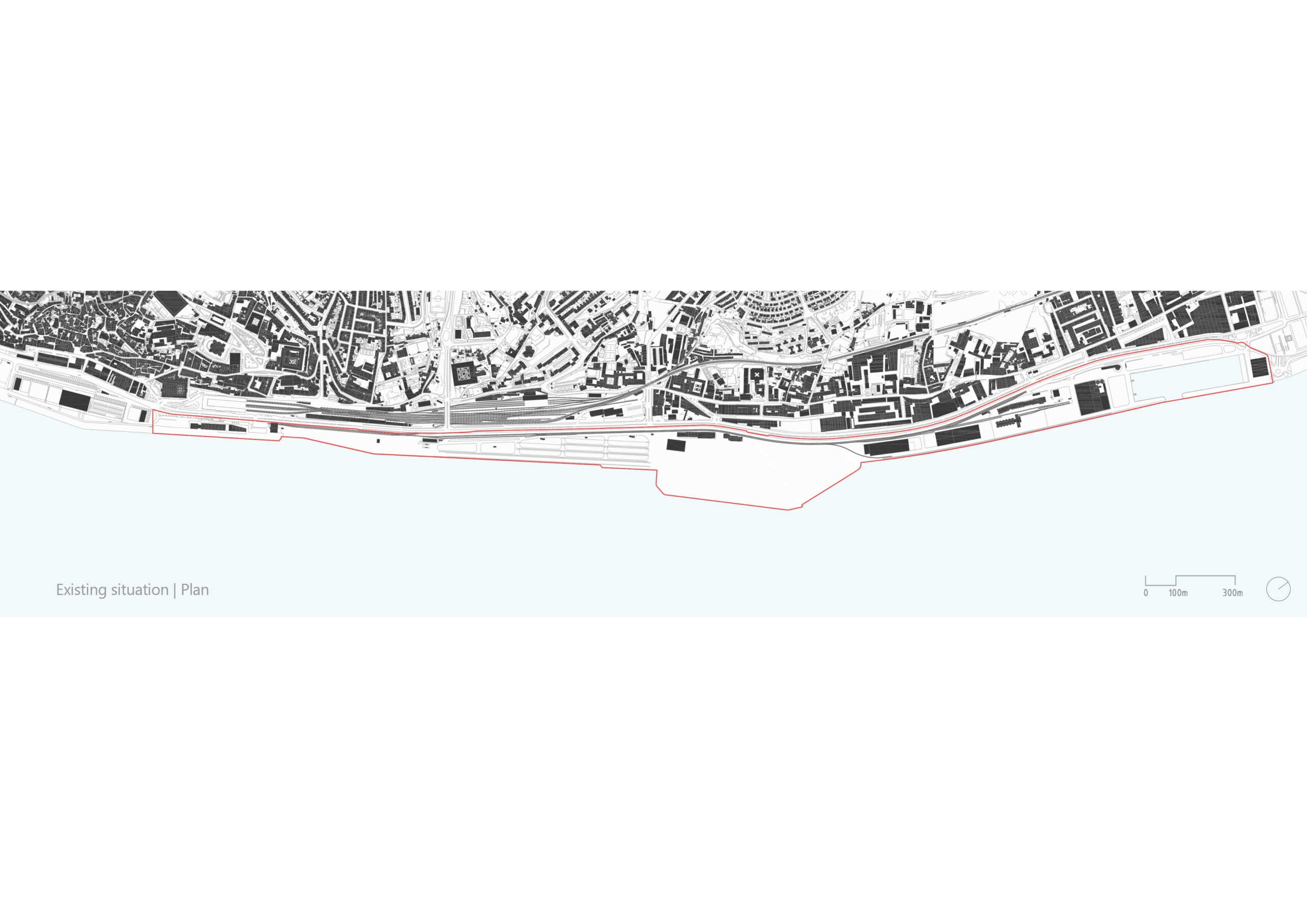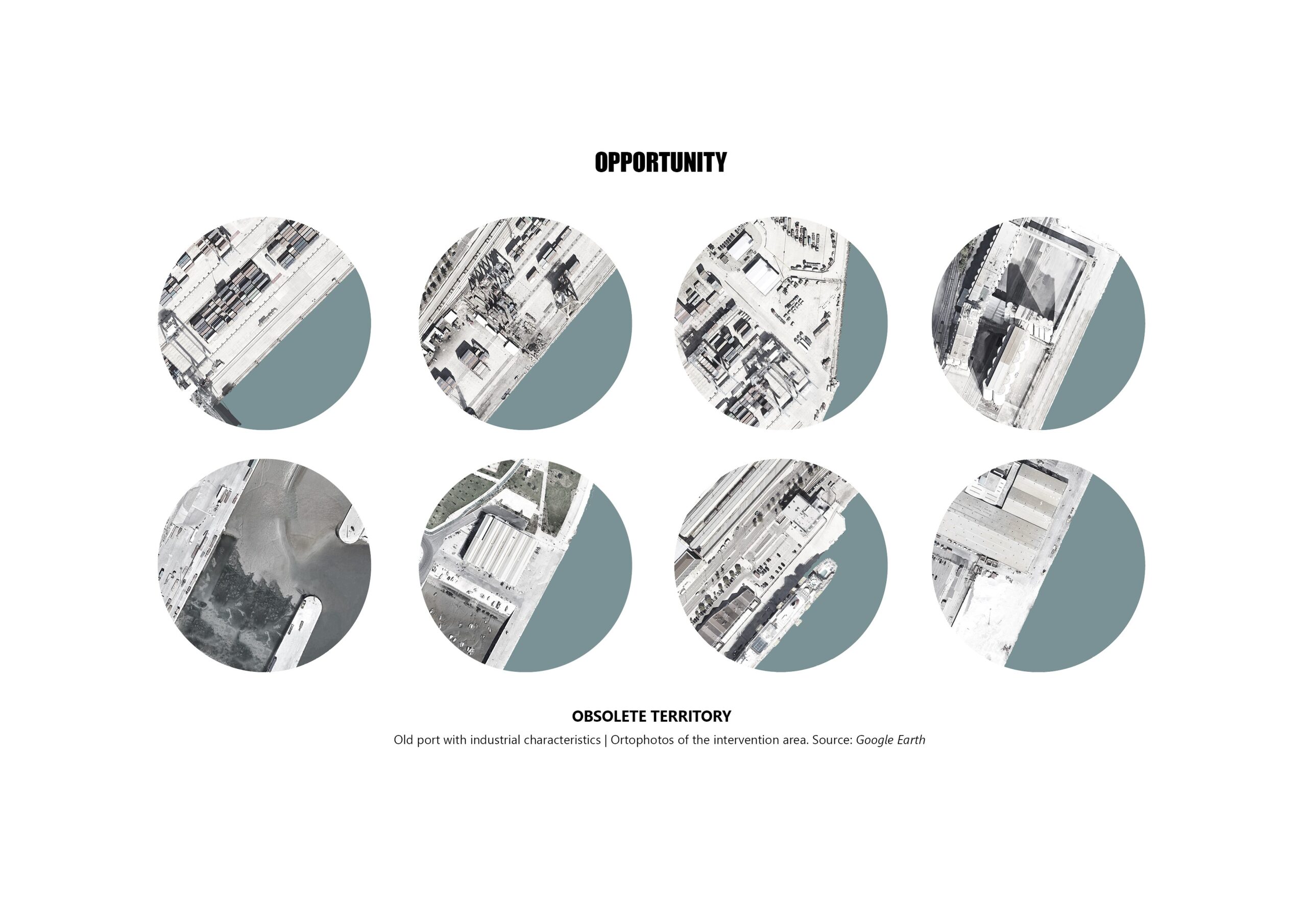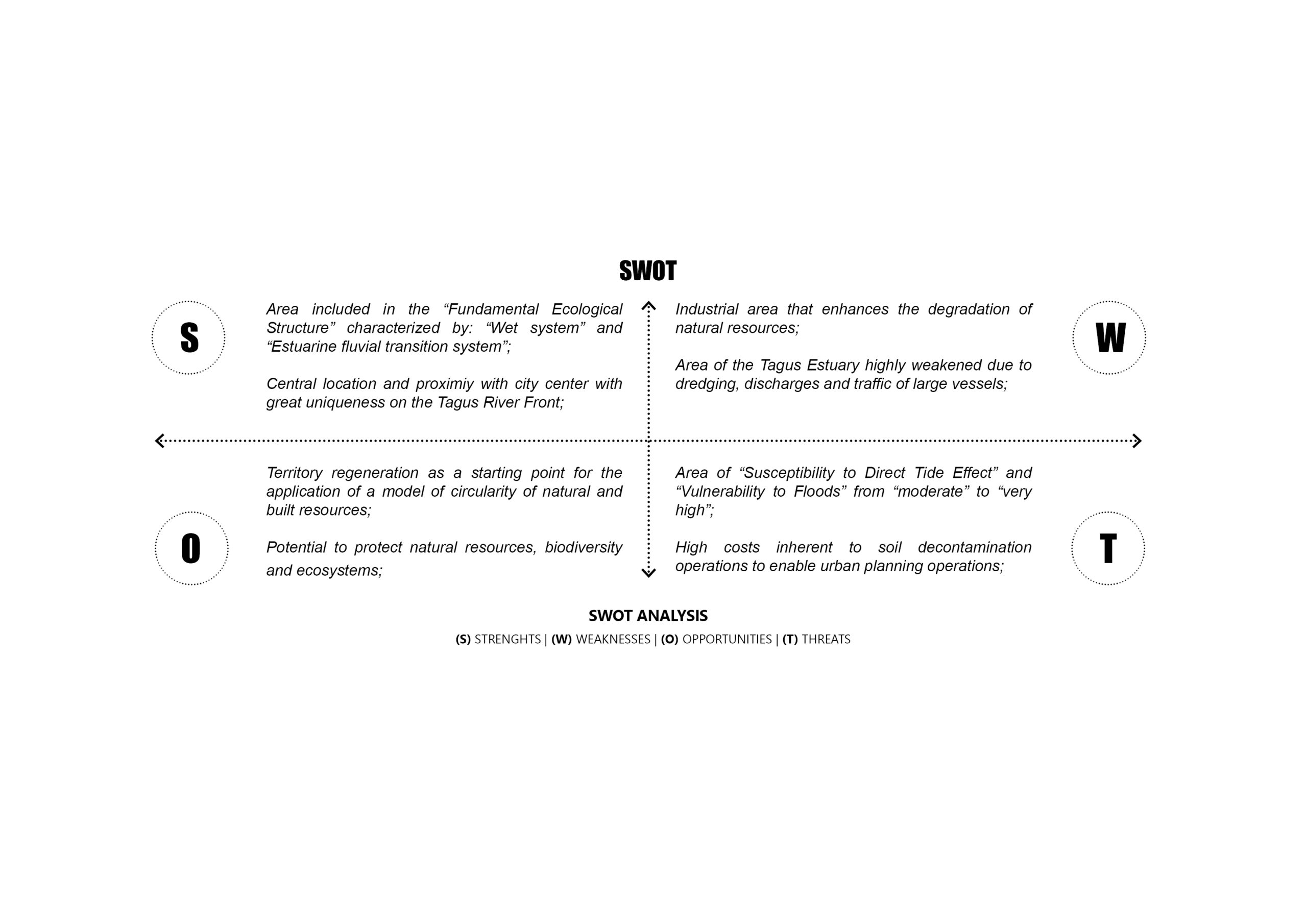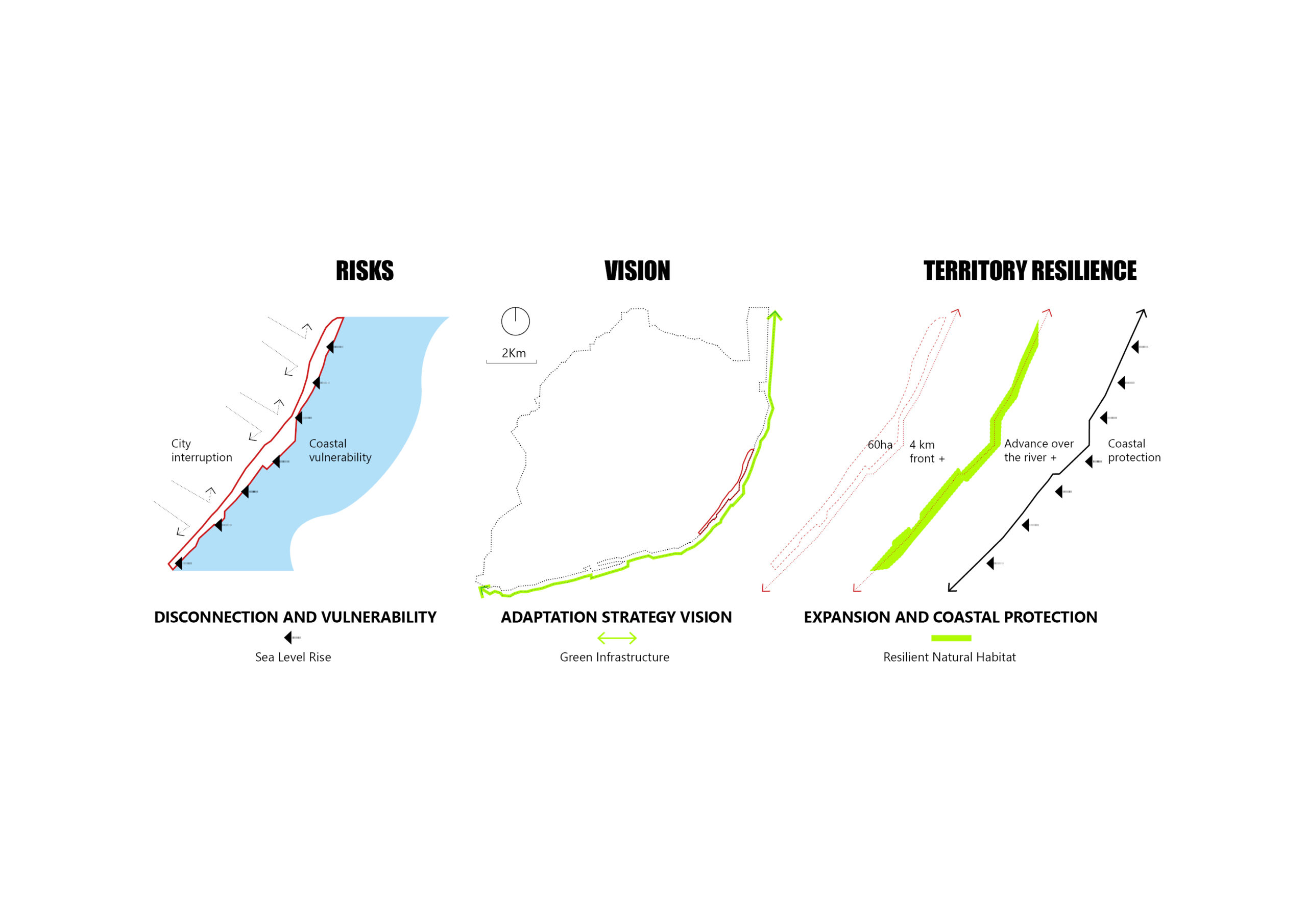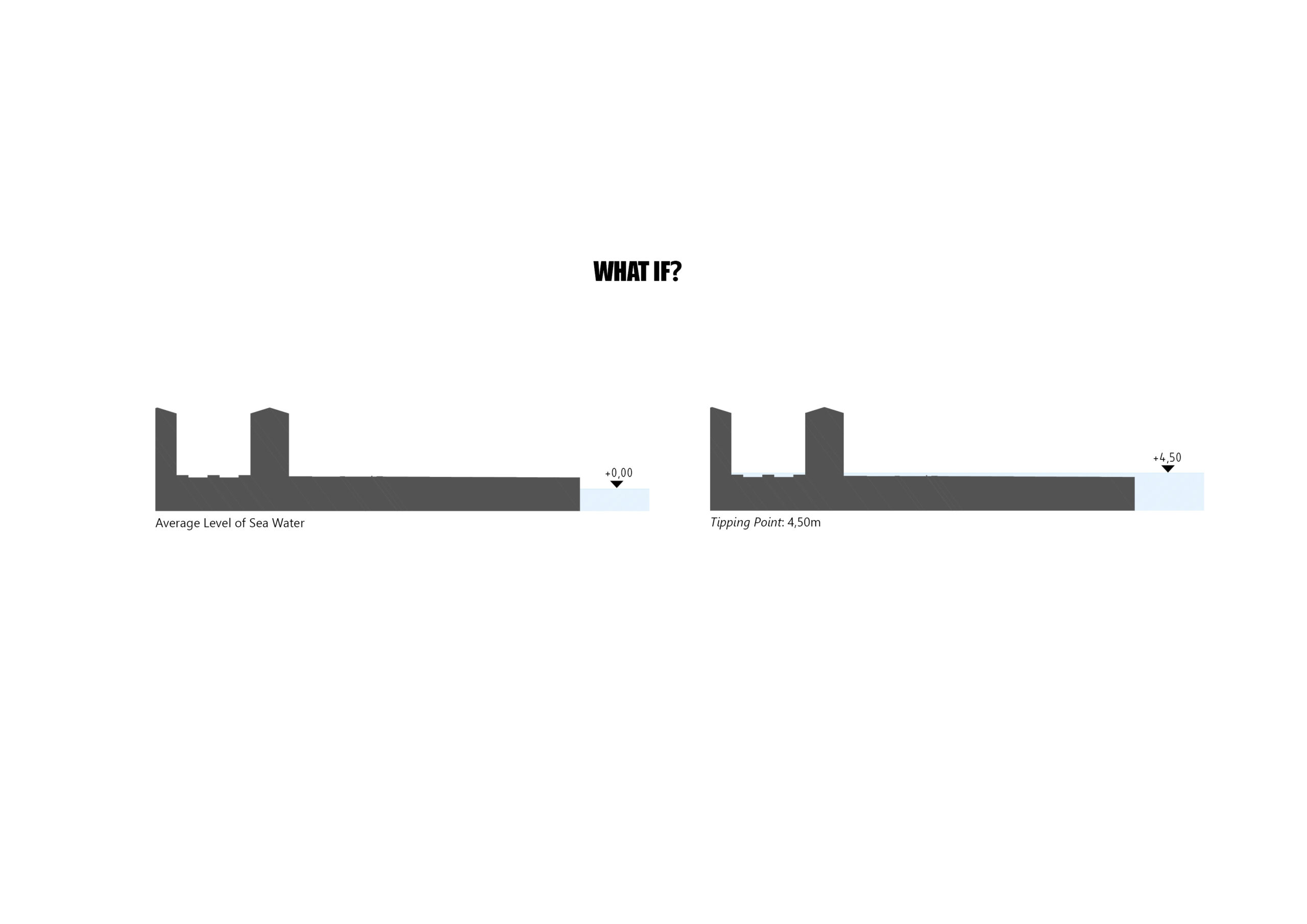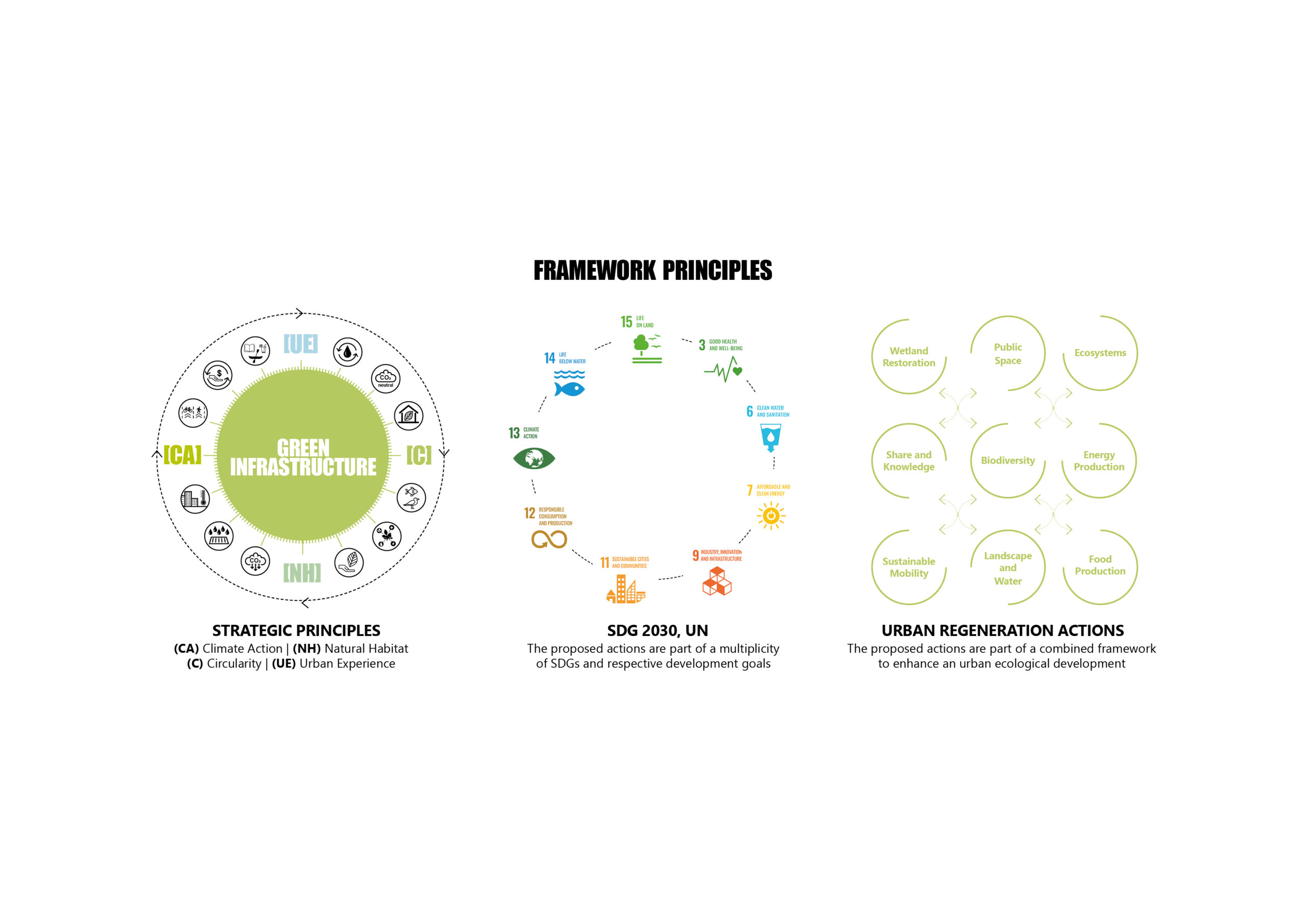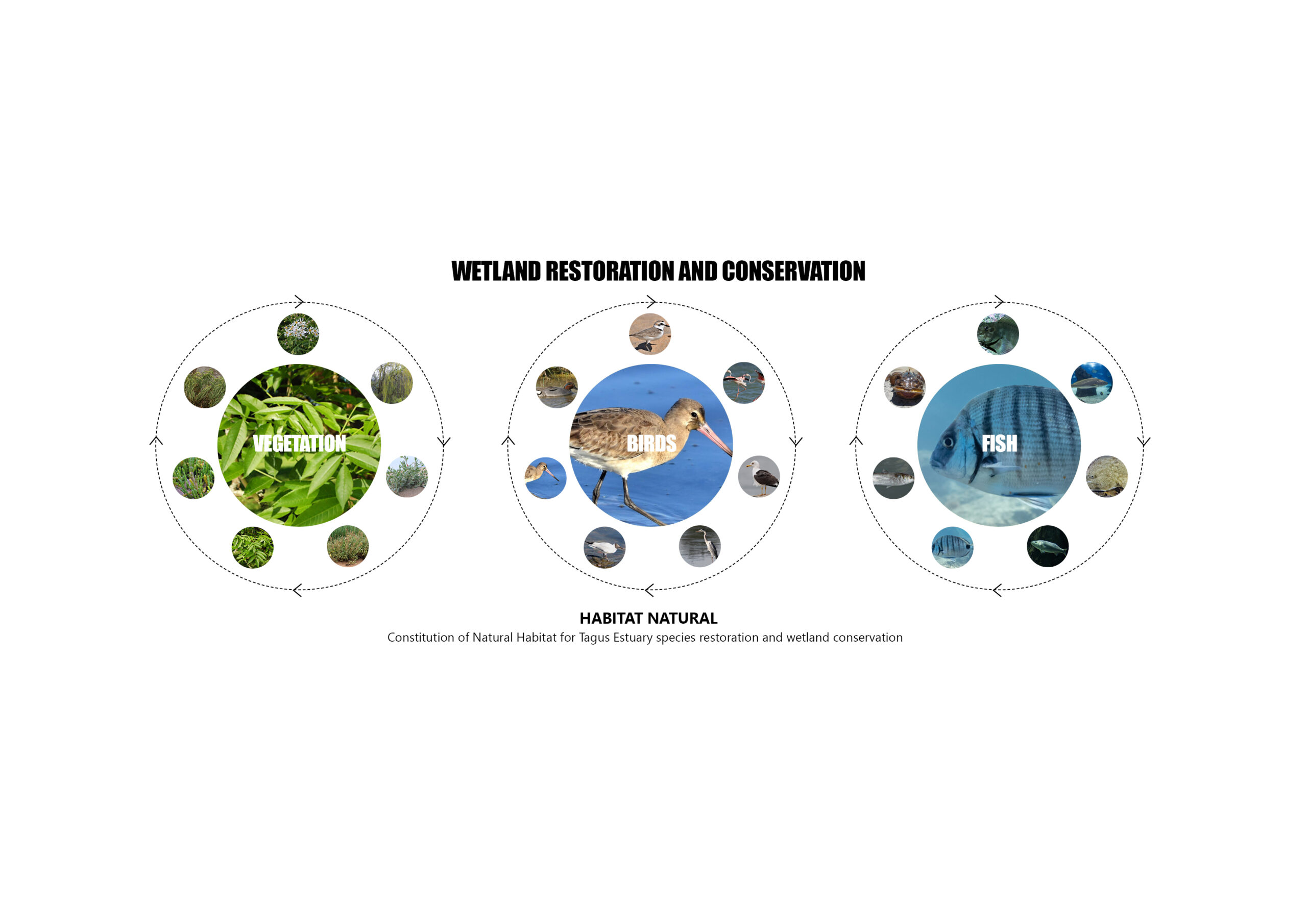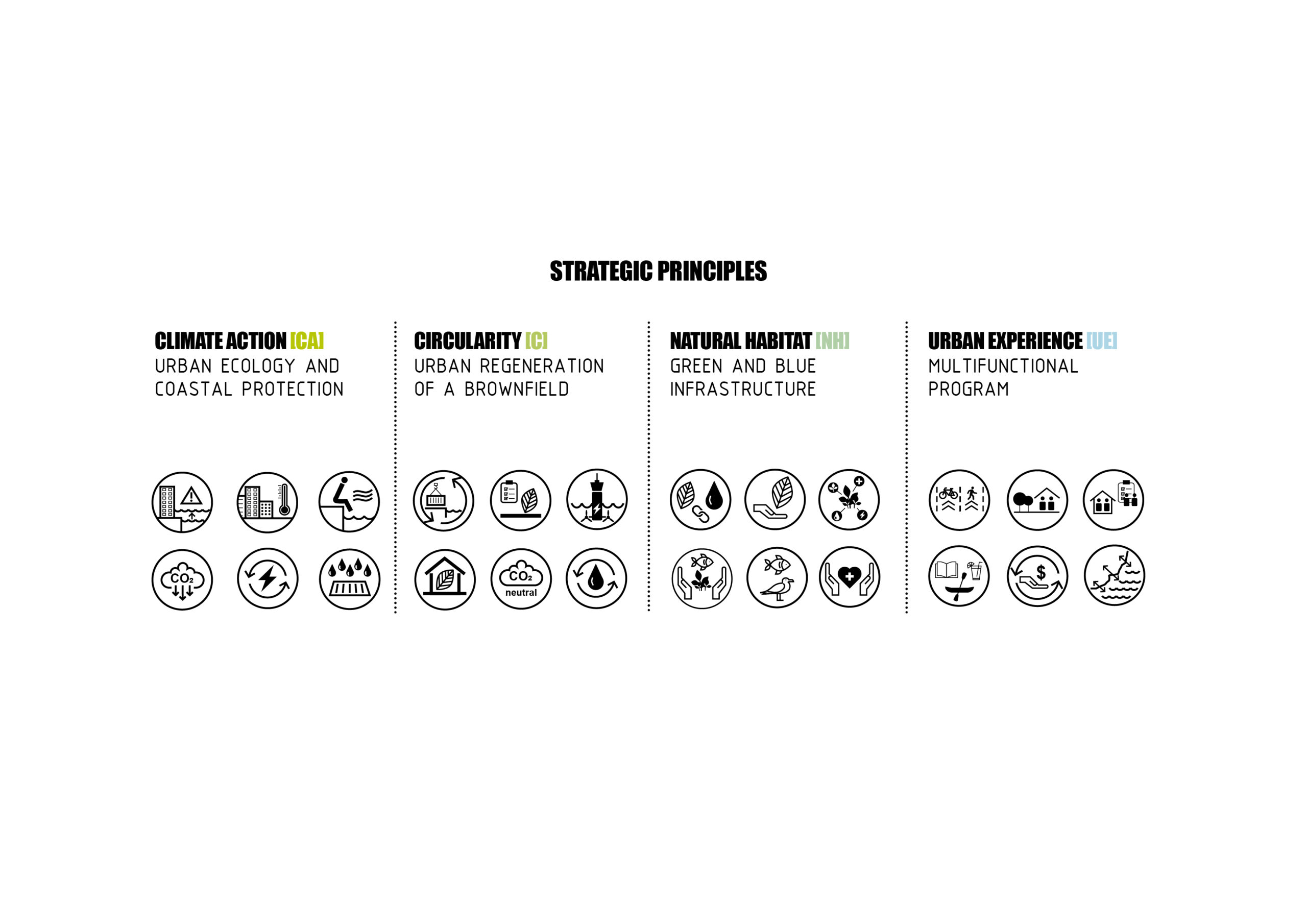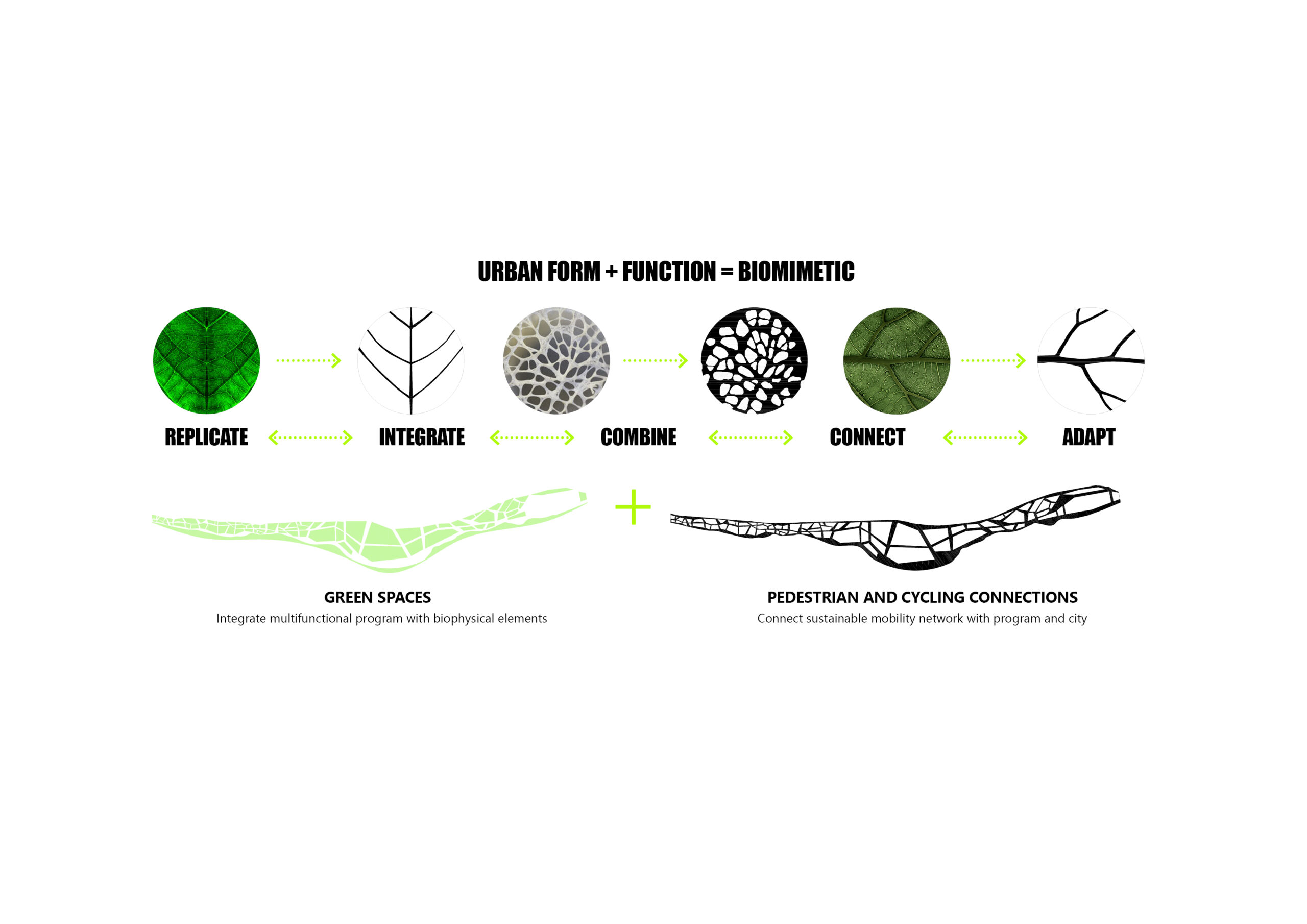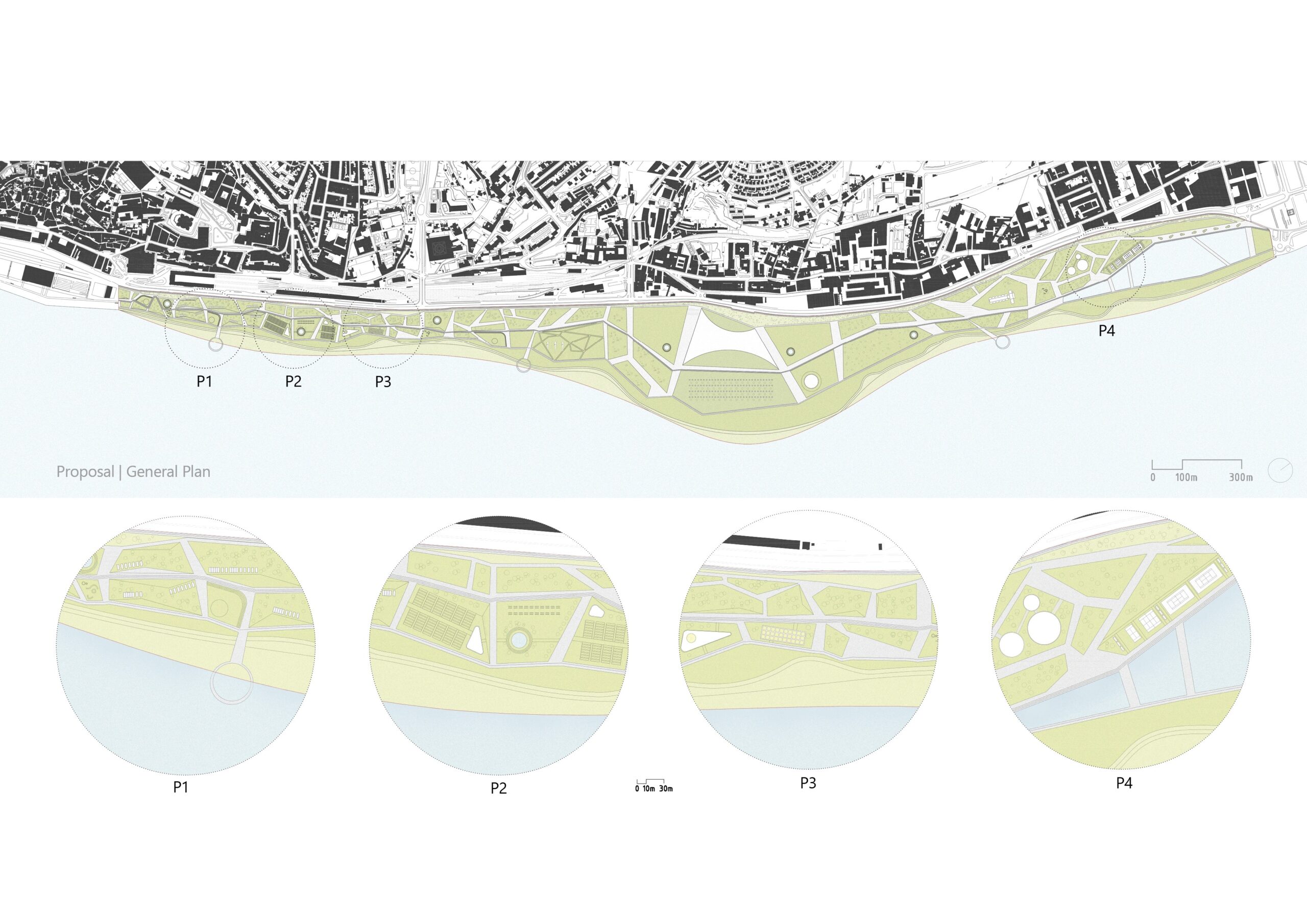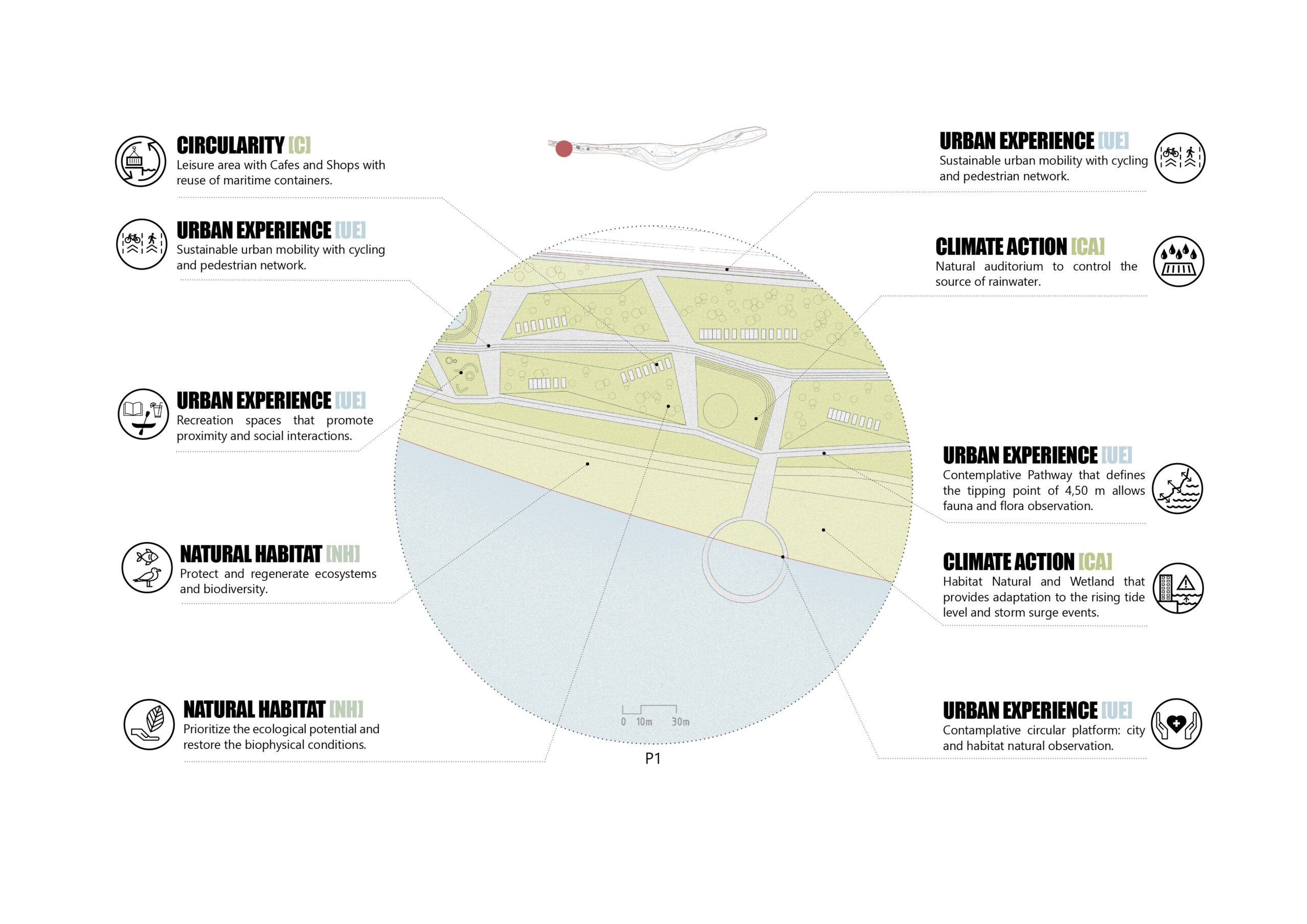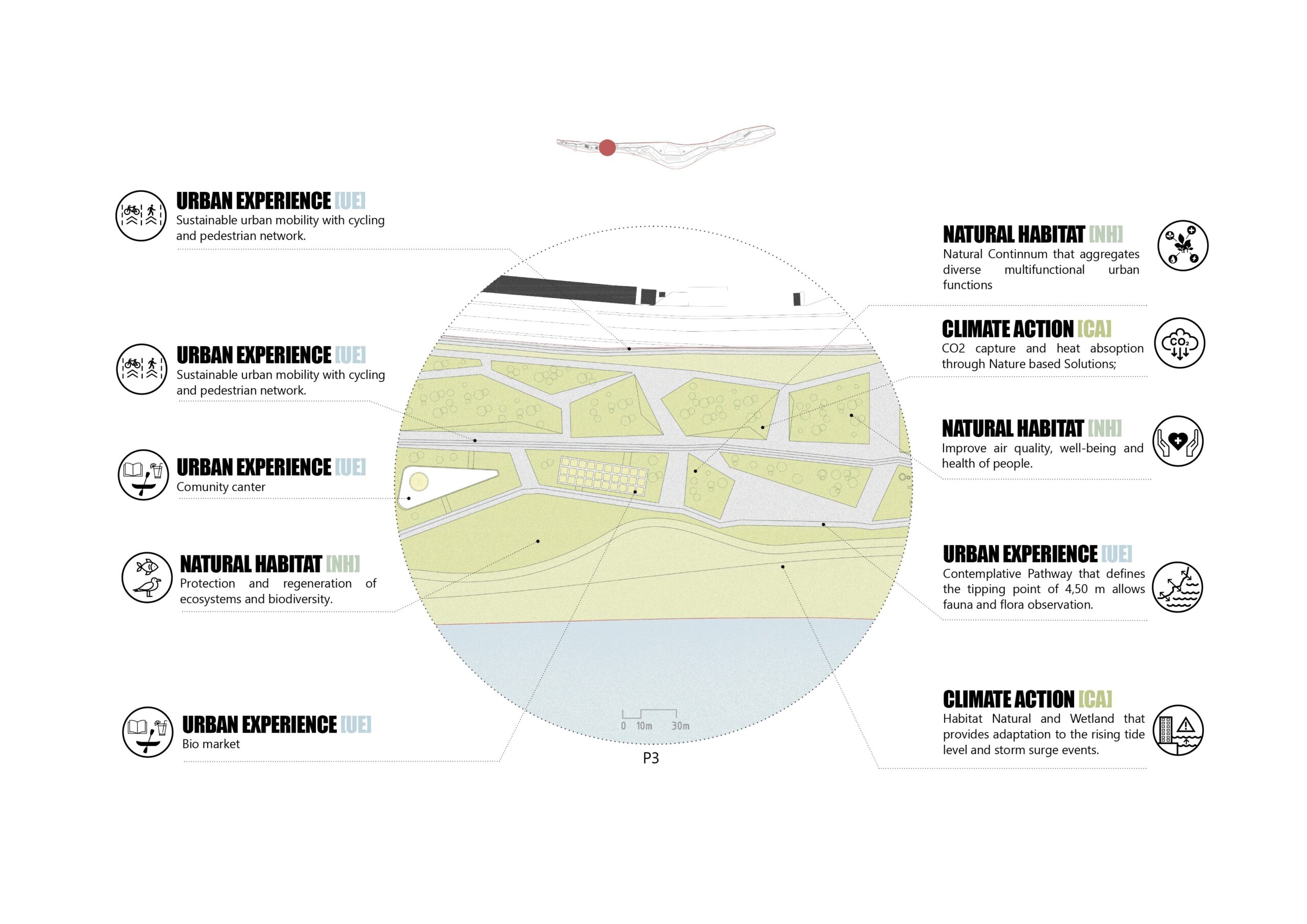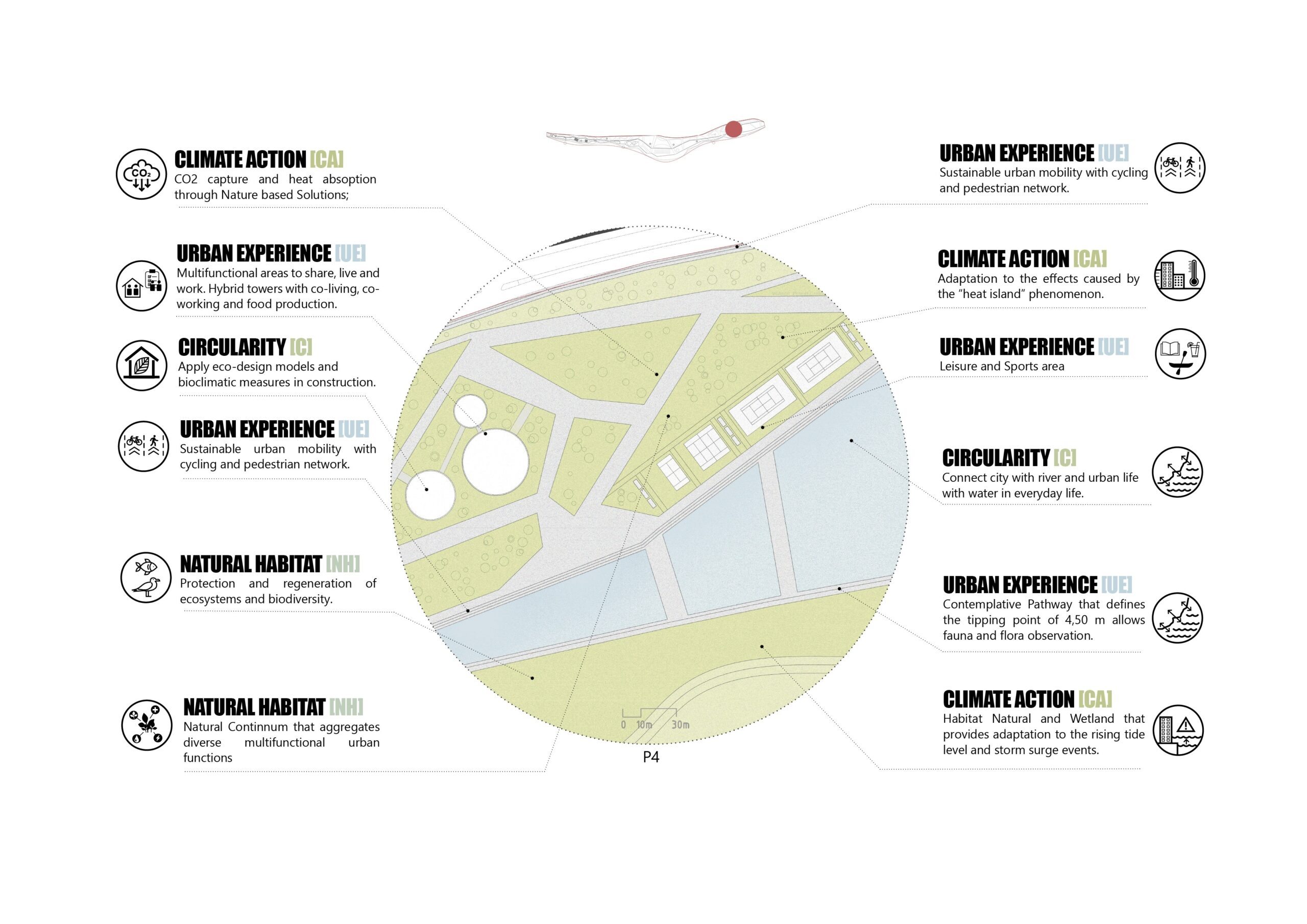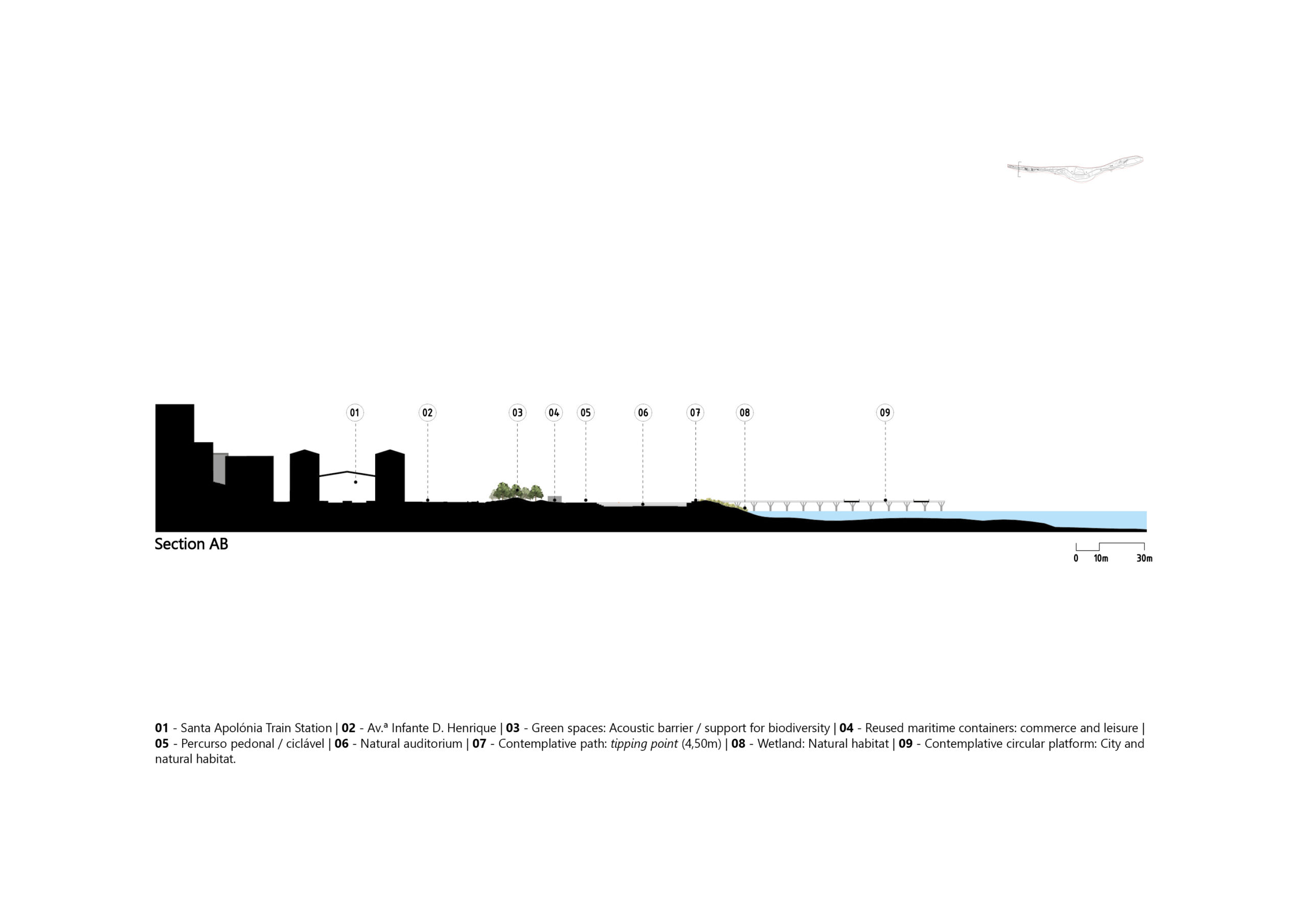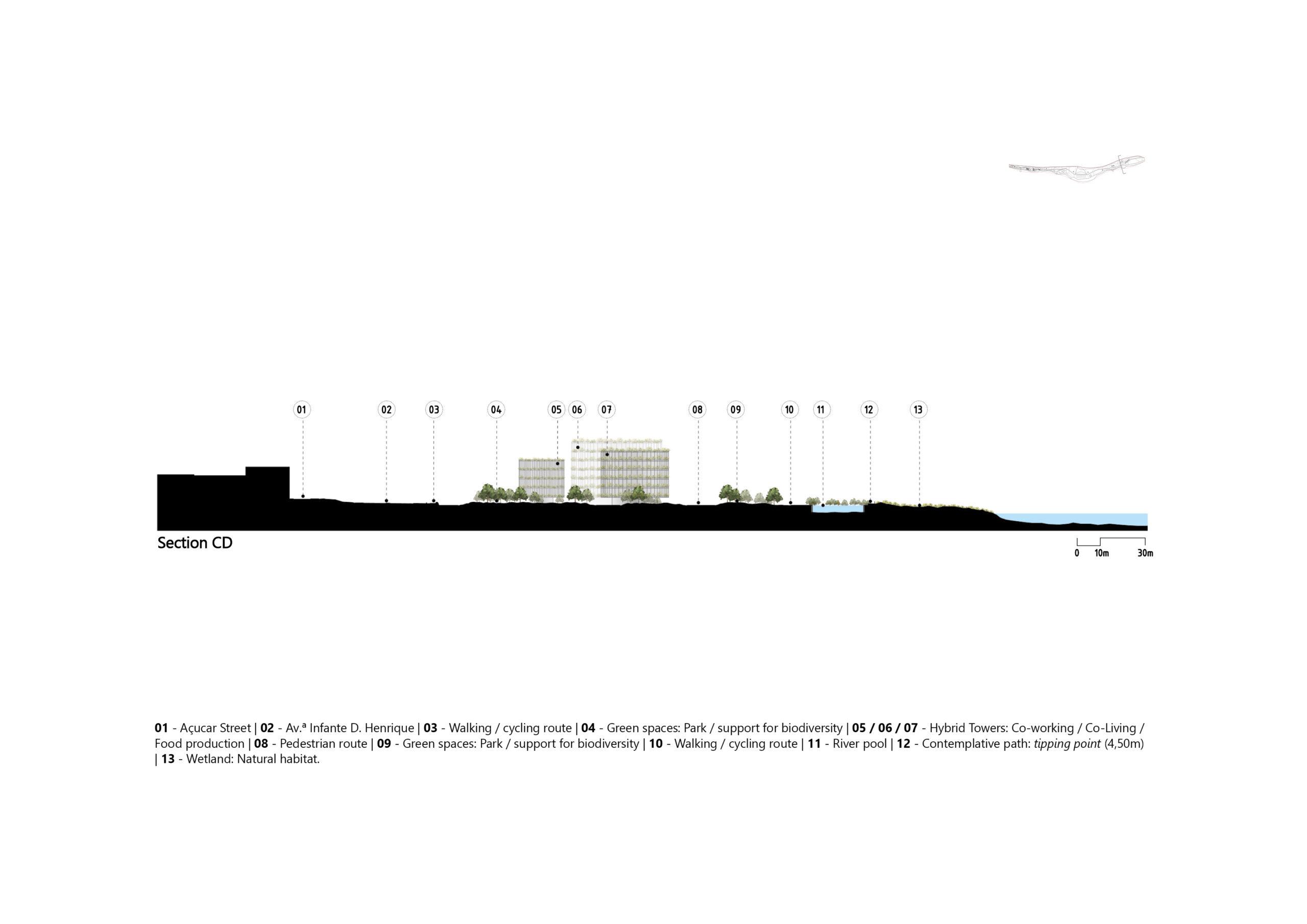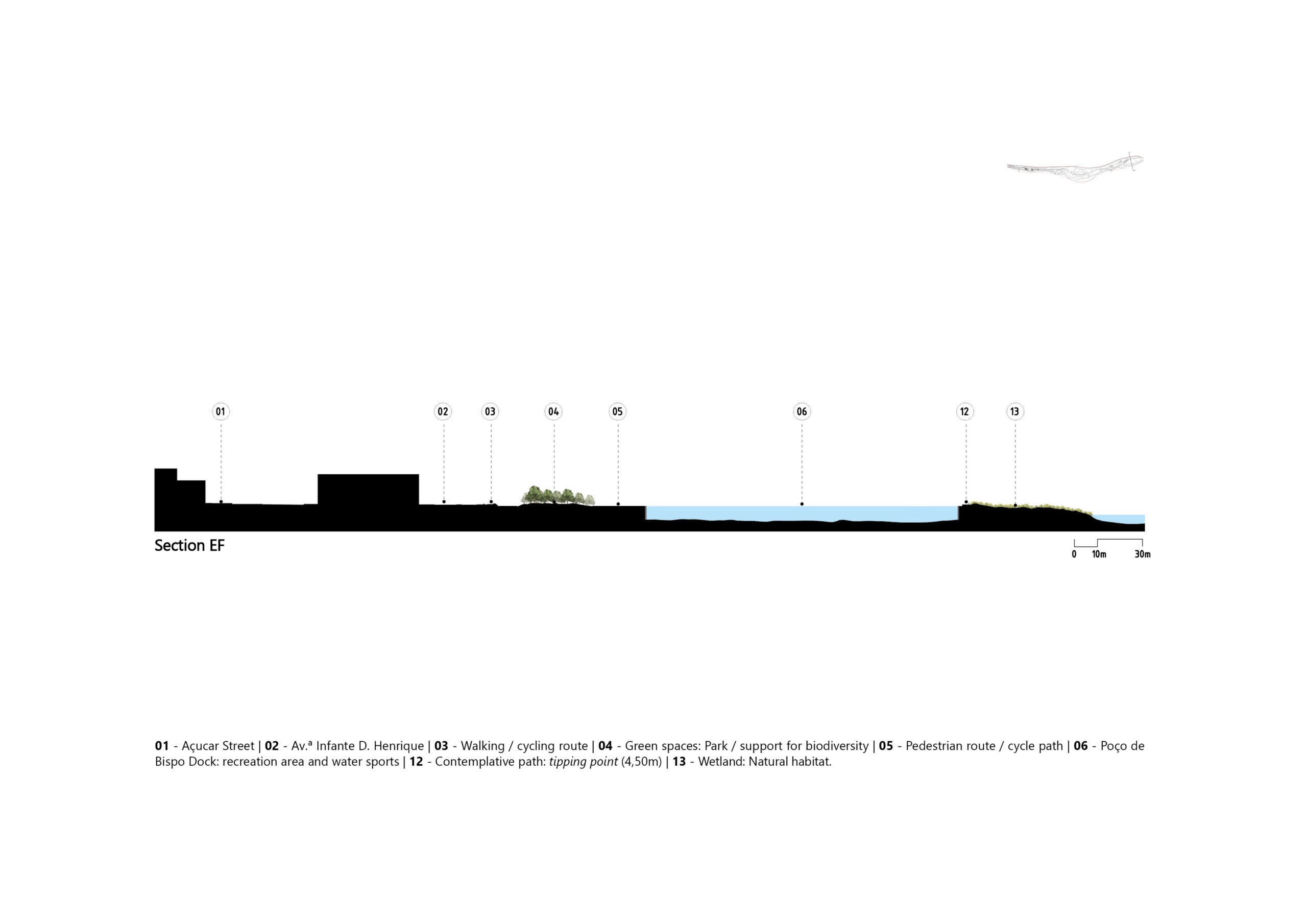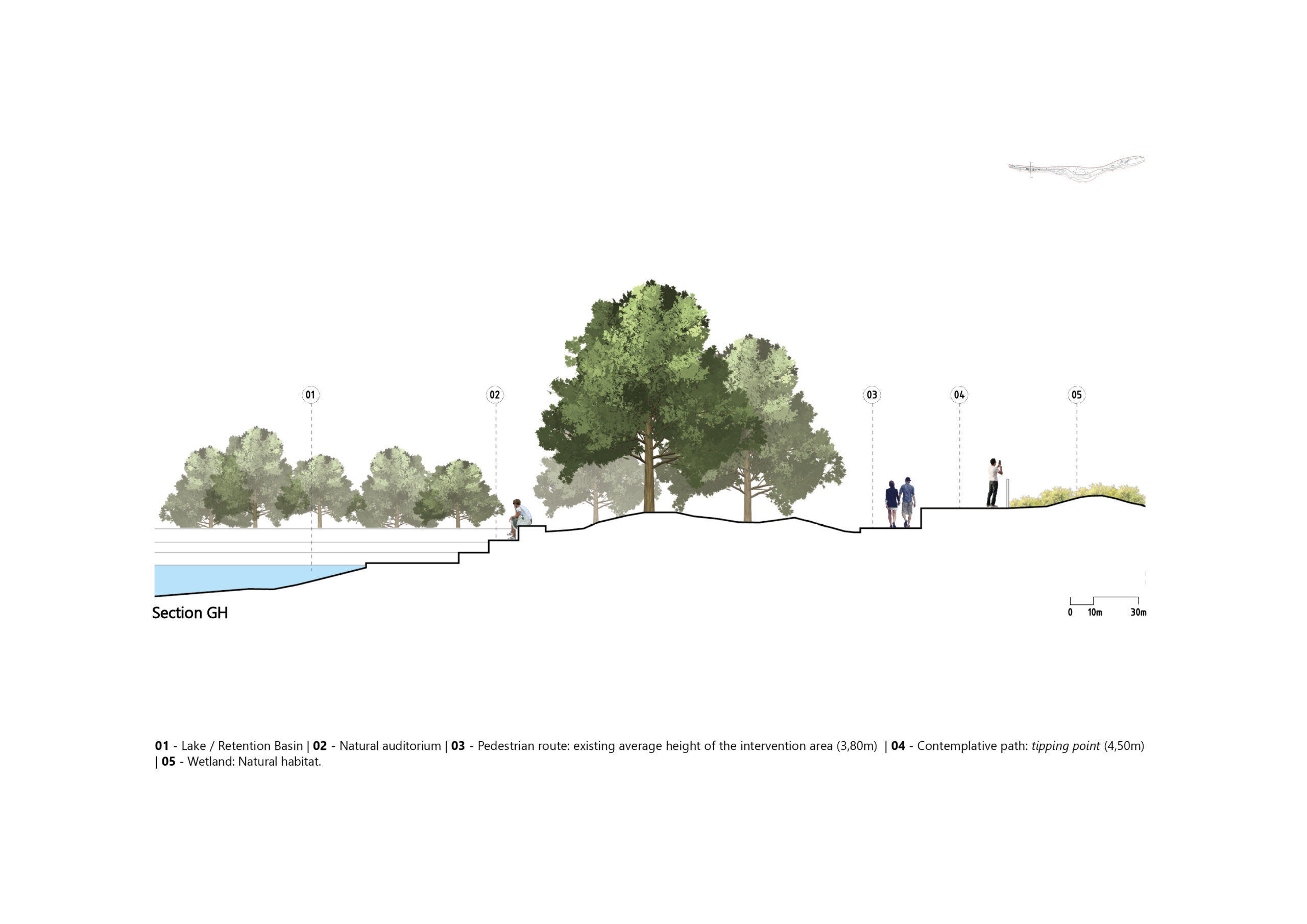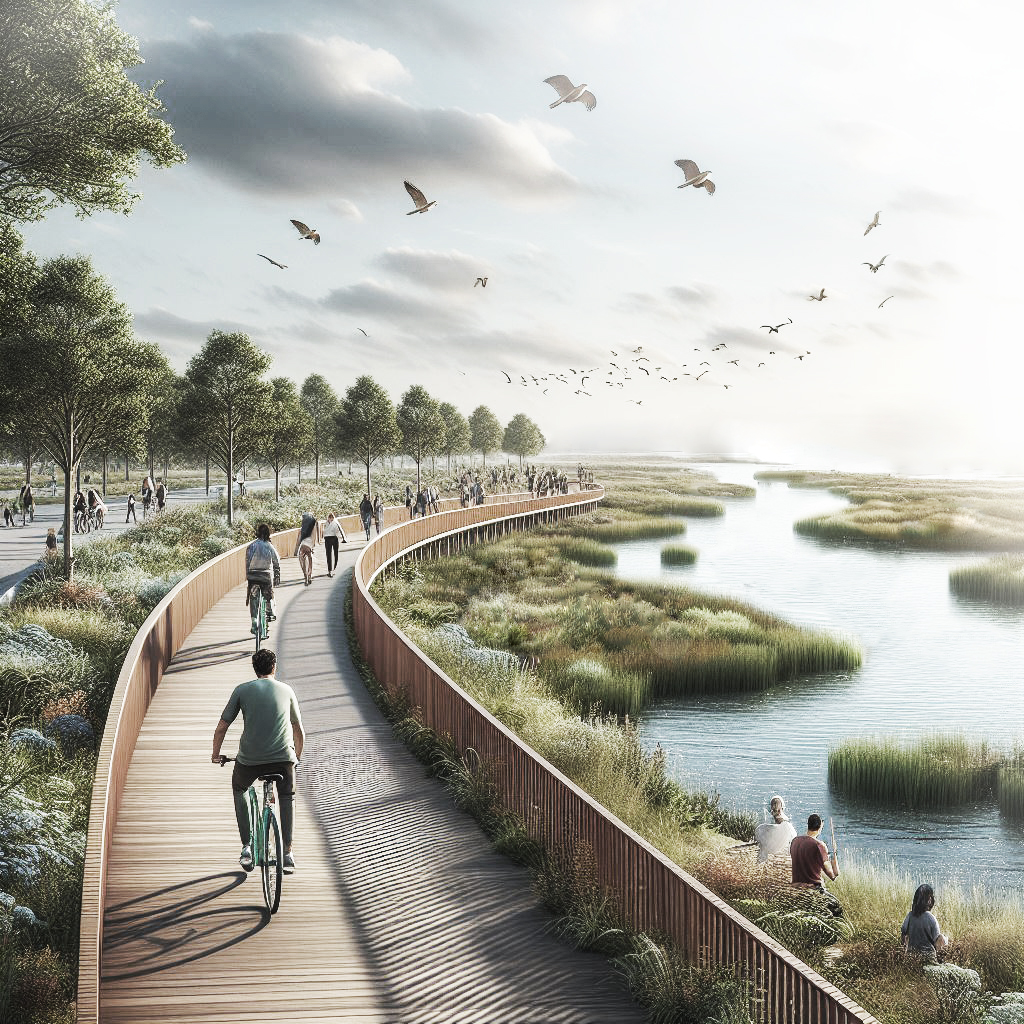The present conceptual study, guided by scientific bases, was developed in a close relationship with the academy, within the scope of the research project in Sustainable Urbanism, with the aim of debating a strategic vision of the future for the resilience of the Lisbon riverfront in the face of the challenges emerging from climate change.
The relationship between the city of Lisbon and the river is ancestral. However, nowadays, the inherent risk of flooding should not be seen as a problem, but rather as an opportunity for the city to re-appropriate water, which, together with the creation of public green spaces, may allow not only the creation of opportunities for recreation and leisure, but also the revival of ecosystems and biodiversity in the area, and its resilience in the face of vulnerabilities inherent to its territorial context.
Water fronts are considered fundamental for the development of innovative urban experiences, taking into account the central position they assume in the territories where they are located and the environmental liabilities that, in most cases, they present. Since the post-industrial period, several transformations of regeneration and revitalization of port brownfields have produced, in these obsolete spaces and disconnected from the urban structure, new functional urban logics and differentiated uses that enhance a multiplicity of benefits.
This contemporary relationship between the city and the waterfronts has gained greater relevance considering, on the one hand, bringing the population closer to new qualified and environmentally regenerated centralities and, on the other hand, protection of coastal areas and all activities that in the city occur, infrastructures and buildings that are more vulnerable to the rise of the average level of sea waters, namely regarding “(…) in terms of their ecological functioning, whether in daily human activities and built structures and infrastructure, while dimensions that composse it” (EMMAC, 2016).
Supported by specific scientific literature on the subject of climate change and its impacts on waterfronts, the regeneration proposal for the riverfront located in the eastern part of the city results in an understanding between the scenario of extreme events and changes in climate and the interpretation of the results achieved on the effects of these same changes in the territory under analysis. It is important to mention the importance of analyzing the project “Estuaries and Urbanized Deltas. Contributions to Integrated Planning and Management. The Lisbon Case” (Costa, 2013), in which scientific knowledge was produced around this issue, based on the development of different scenarios regarding the risk of flooding on the Lisbon riverfront, as a result of the definition of several tipping points. Based on the “What if?” methodology and taking the time horizon up to 2100 as a reference, with a rise of the average level of sea waters up to a tipping point of 4.50 m, the urban plan was established that proposes the implementation of the Tejo Ecological Park.
According to the IPCC (2013), from the second half of the 20th century, extreme changes in climatic phenomena have been observed. He also mentions that with a probability of 66% – 100%, that torrential rains have increased in many regions of the planet and that extreme sea levels (such as those observed in storm surges) have increased since 1970, mainly resulting from the rise of the average level of sea waters (Fernandes et al. al, 2017). As a result, the risk of flooding is a critical factor in climate change on the Lisbon riverfront, to which several factors contribute: i) rise of the average level of sea waters; ii) Meteorological superelevation; iii) Effect of progressive floods in the Tagus; iv) Rapid flooding in the surrounding urban environment; v) Tidal effect vi) Ripple (Ribeiro, 2017).
With the aim of implementing a set of environmental and climate actions within the scope of European policies, the European Green Deal and the Municipal Strategy for Adaptation to Climate Change, the proposed transformation for the area of intervention is based on four strategic principles that will define urban resilience to future risks through the implementation of a green infrastructure that integrates a set of services:
(i) Climate action – Regenerative appropriation of the port/industrial area, as a model of ecological urban development for coastal protection and adaptation of the territory to the unpredictability of climate change, namely in terms of rising tides.
(ii) Circularity – Urban regeneration enhancing, on the one hand, the physical relationship and the extension of the city with the riverfront and, on the other hand, sustainable development, in a perspective of circularity, resilience and urban innovation.
(iii) Natural Habitat – Reappropriation of water by the city and creation of a network of public green spaces that integrates a system of sustainable mobility, allowing the restoration of ecosystems and biodiversity through contemplative and productive landscapes.
(iv) Urban Experience – Development of a multifunctional program that enhances the city’s relationship with the riverfront and creates a set of spaces and urban forms with different uses, in a relationship between built habitat and natural habitat.
The intervention on this coastal front, through landfills, will make it possible to respond to the problem under analysis through the incorporation of Natural Climate Solutions (NCS) and conservation, regeneration and better soil management actions that increase carbon storage and/or avoid greenhouse gas emissions. NCS therefore play a role in preventing/reducing emissions through the restoration of terrestrial wetland ecosystems as a starting point for climate mitigation (World Economic Forum, 2021). According to the World Economic Forum (WEF, 2021), coastal wetlands are key natural elements for absorbing wave energy, reducing damage caused by floods, and providing protection against storms.
The definition of the urban form and its articulation with the different programmatic functions had as its starting point the analysis of natural systems through the application of the concept of Biomimicry (Bio – Life + Mimesis – Imitation), created by the biologist Janine Benuys, in 1997 with the publication of the book Biomimicry: Innovation Inspired by Nature. Benuys defined Biomimicry as a “new discipline that studies the best ideas of nature and then replicates that design and processes to solve human problems”, considering it an “innovation inspired by nature”. This concept was applied in the intervention area according to the principles – REPLICATE, INTEGRATE, COMBINE, CONNECT AND ADAPT – resulting in a network of green spaces that incorporate a multifunctional program interconnected by a network of paths. The applicability of such assumptions and the inspiration in biological systems, combined with a natural-based planning, enhance a multiplicity of benefits resulting in the regeneration of this territory.

